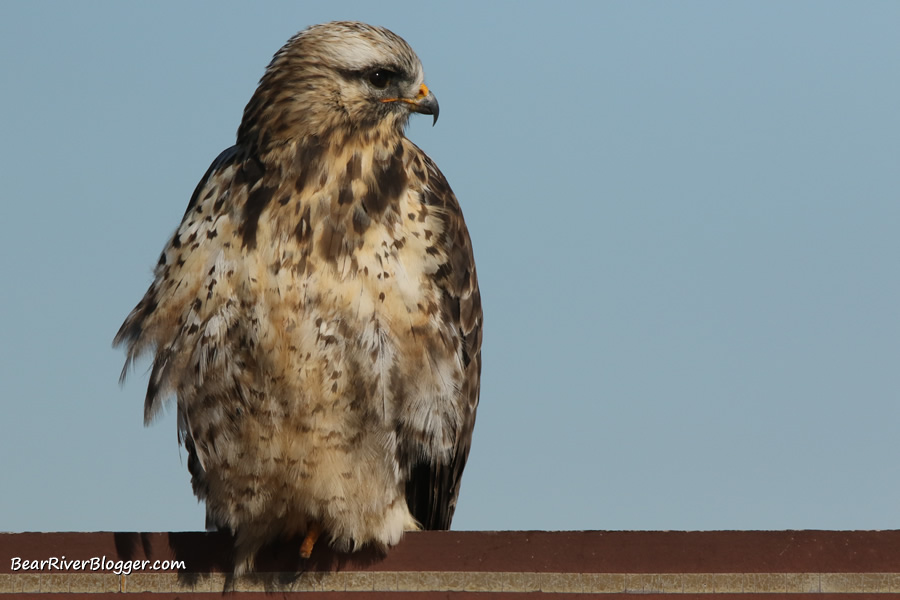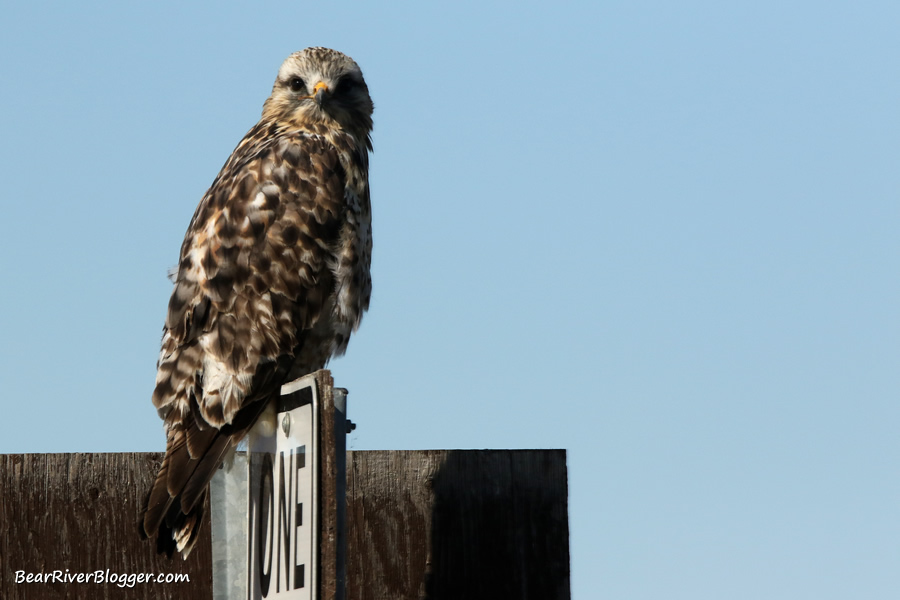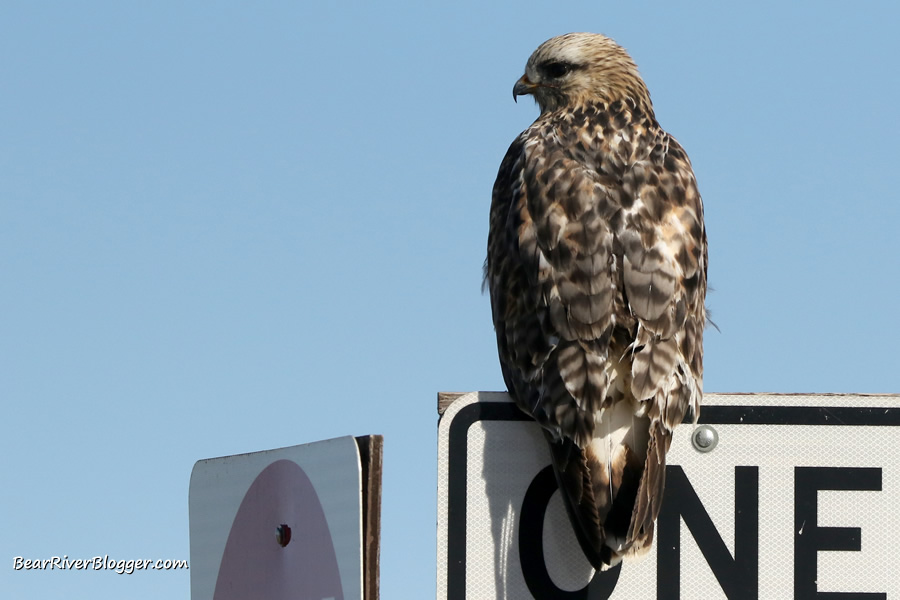It’s a little early, quite a bit early, in fact, but the rough-legged hawk has once again returned to Utah for the winter season.
Each year, the arctic tundra and the far reaches of North America sends us a very unique raptor for a few short months.

The rough-legged hawk, Buteo lagopus, migrates from the extreme northern corner of the North American continent when the prevailing weather becomes too hard to bear and heads south to spend its winter in a large portion of the United States.
We are quite fortunate to have these unique and majestic birds migrate so far south from their breeding grounds. They bring a winter photographing and birding opportunity to many places where most migratory birds have left for the season.
When can I find the rough-legged hawk in Utah?
Typically, this particular raptor is found during the coldest, harshest parts of the winter. They are well adapted to the cold so as most birds are leaving Utah for warmer climates, the rough-legged hawk is just arriving.
I don’t expect to see them arrive until December during a normal year but this year has been anything but normal.
With the cold arctic air which has settled in over the west, it is no wonder I found my first rough-legged hawk yesterday in northern Utah. This is well before these handsome raptors usually arrive.
In fact, until we get a hard sustained freeze I rarely see a rough-legged hawk in Utah.
Where can I find the rough-legged hawk in Utah?
You can find the rough-legged hawk throughout much of northern Utah as shown by the Audubon Society website. From the places I have observed, however, this particular raptor seems to prefer areas that are a bit more open, possibly mimicking their summer home the arctic tundra.
I have seen them on antelope Island at times and in other more remote places in Northern Utah but the place I most consistently find rough-legged hawks in Utah is on the Bear River Migratory Bird Refuge, just west of Brigham City.

Each year the refuge draws a number of rough-legged hawks to the nearly 80,000-acre wildlife sanctuary. They can commonly be seen while you are driving on forest street and along portions of the auto tour route as well.
What does a rough-legged hawk look like?
Similar in size to a red-tail hawk, the rough-legged hawk has a few distinguishing features. They are a brown mottled bird with slightly longer, narrower wings than a red-tail hawk.
They have a relatively smaller beak it seems as well as compared to a red-tail hawk. Their feet and legs are covered with feathers, hence the name rough-legged. This physical characteristic is what helps them endure the very long, cold winter months they put up with each winter

One very discernable characteristic is how the rough-legged hawk can hover in place, with or without wind, high above the ground in search of prey. Similar to how an American kestrel hunts, the rough legged-hawk utilizes this unique ability to gain a birds-eye view when no physical perches are available.
This behavior is usually the sign I see first when the rough-legged hawks have arrived. When I see a large, brown mottled bird hovering above a field late in the year, I can just about bet it is a rough-legged hawk.
I can’t say the Bear River Migratory Bird Refuge has the most rough-legged hawks in northern Utah but I can say it is the place I consistently see them each winter. Once they are in town it is a rare occasion when I don’t see one on the refuge, in fact.
I have only seen one rough-legged hawk so far this year on the refuge but I have seen a couple since that first sighting in the neighboring agriculture areas of Box Elder County.
These birds symbolize my second most favorite time of the year to photograph and birdwatch, winter.
Last winter I had the opportunity to watch a rough-legged hawk go after a marsh wren buried deep in the grass. I thought they only preyed on voles and mice but after watching this bird for quite a while I learned something I hadn’t known before, they do indeed prey on small birds.
I wrote a previous blog post about this moment I had on the refuge last winter.
This is why I like winter birding opportunities on the refuge, they are fewer, far fewer than during the summer, but these moments are a lot more intimate and personal. You get to see and experience things not available during the rest of the year because of the quiet and solitude the refuge offers during the winter months.
Yes, it can be bitter cold that time of year but I relish those moments when I have the refuge to myself. It’s just me and the birds.
Feel free to subscribe to my blog and I will try and keep you up to date on the happenings on and off the Bear River Migratory Bird Refuge with regards to my birding and nature photography excursions.





